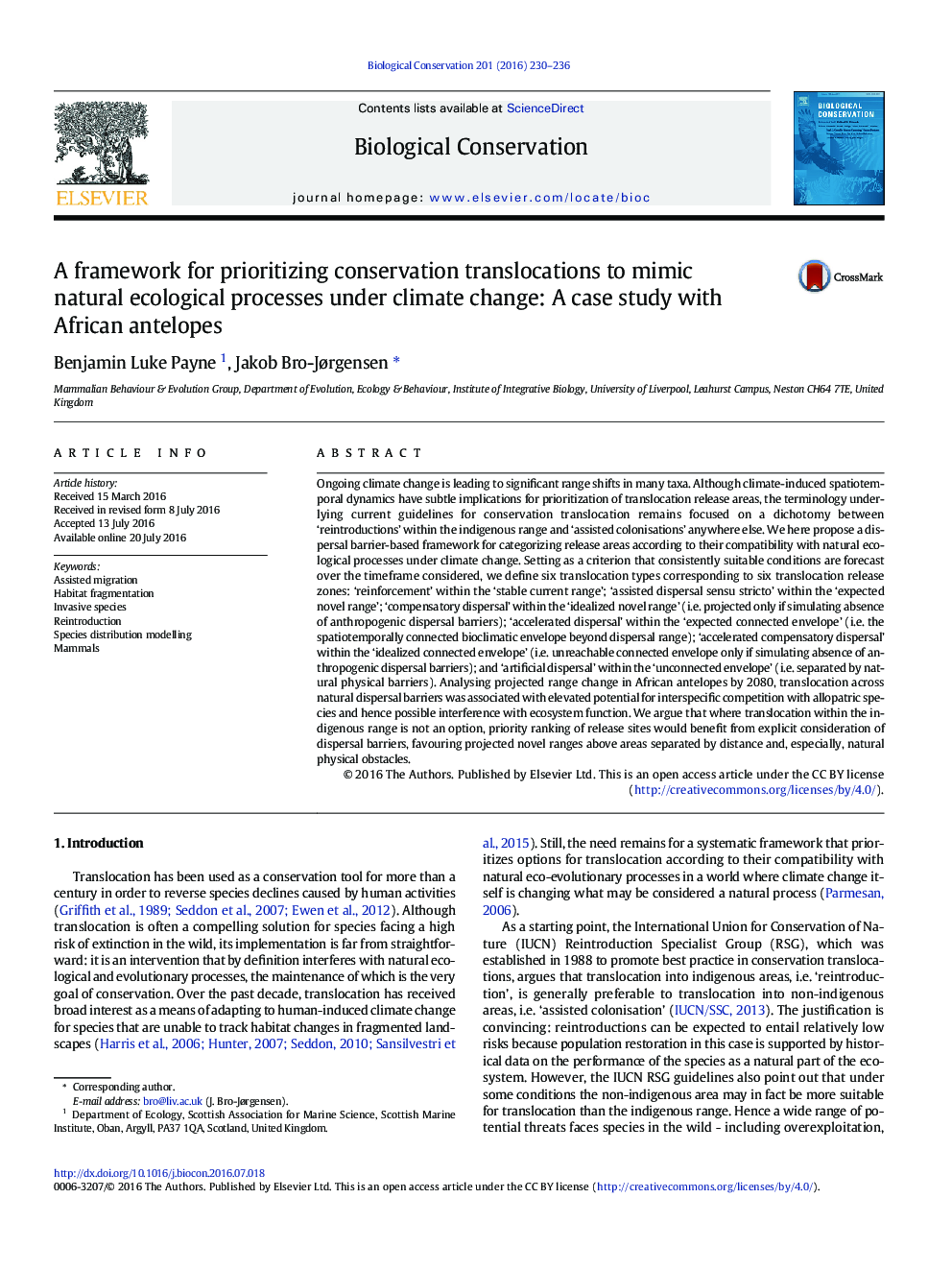| کد مقاله | کد نشریه | سال انتشار | مقاله انگلیسی | نسخه تمام متن |
|---|---|---|---|---|
| 6298200 | 1617900 | 2016 | 7 صفحه PDF | دانلود رایگان |
- We propose a dispersal-barrier based system for selecting translocation release sites.
- Dynamic ecosystem changes are incorporated using species distribution modelling.
- Expected novel ranges rank above areas cut off by man, distance and natural geography.
- Six release zones capture potential for ecological interference in African antelopes.
- Application to climate change-threatened antelopes illuminates translocation options.
Ongoing climate change is leading to significant range shifts in many taxa. Although climate-induced spatiotemporal dynamics have subtle implications for prioritization of translocation release areas, the terminology underlying current guidelines for conservation translocation remains focused on a dichotomy between 'reintroductions' within the indigenous range and 'assisted colonisations' anywhere else. We here propose a dispersal barrier-based framework for categorizing release areas according to their compatibility with natural ecological processes under climate change. Setting as a criterion that consistently suitable conditions are forecast over the timeframe considered, we define six translocation types corresponding to six translocation release zones: 'reinforcement' within the 'stable current range'; 'assisted dispersal sensu stricto' within the 'expected novel range'; 'compensatory dispersal' within the 'idealized novel range' (i.e. projected only if simulating absence of anthropogenic dispersal barriers); 'accelerated dispersal' within the 'expected connected envelope' (i.e. the spatiotemporally connected bioclimatic envelope beyond dispersal range); 'accelerated compensatory dispersal' within the 'idealized connected envelope' (i.e. unreachable connected envelope only if simulating absence of anthropogenic dispersal barriers); and 'artificial dispersal' within the 'unconnected envelope' (i.e. separated by natural physical barriers). Analysing projected range change in African antelopes by 2080, translocation across natural dispersal barriers was associated with elevated potential for interspecific competition with allopatric species and hence possible interference with ecosystem function. We argue that where translocation within the indigenous range is not an option, priority ranking of release sites would benefit from explicit consideration of dispersal barriers, favouring projected novel ranges above areas separated by distance and, especially, natural physical obstacles.
391
Journal: Biological Conservation - Volume 201, September 2016, Pages 230-236
